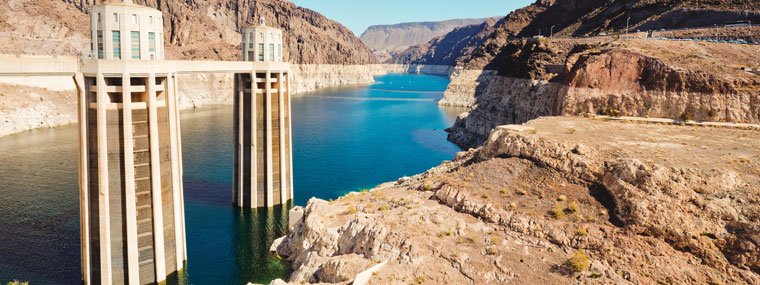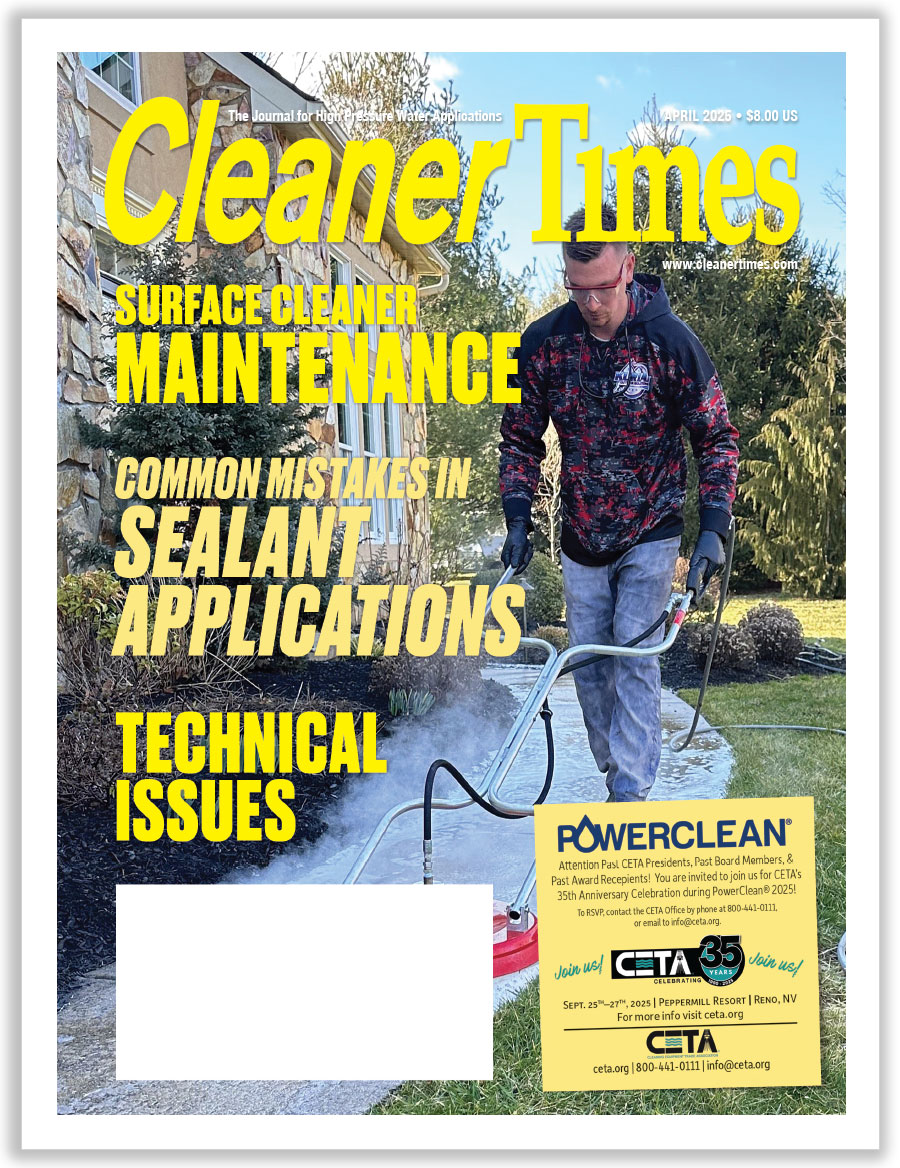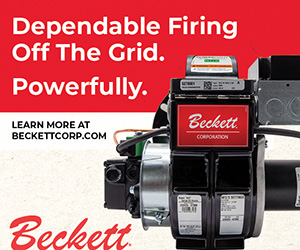
Persevering in Drought Conditions
By Diane M. Calabrese / Published July 2022
Take a limited amount of water. Add demand. Expect problems.
The more limited the water, the greater the scarcity. Consequently, a region that is naturally (because of geophysical conditions) semi-arid or arid will experience the greatest ill effects when generally low rainfall goes lower still.
The drought that’s been ongoing in the West ties together several issues that affect members of our industry. It not only demonstrates why it’s important to accomplish as much as possible with the minimum amount of water but also illustrates the need to recycle wastewater and to comply with efforts to reduce emissions.
What do efforts to reduce emissions have to do with drought? Emissions are linked to a warmer atmosphere (and microclimates).
A warmer atmosphere holds more water. In hot regions where water is already scarce, more water that moves into the atmosphere from evaporation and transpiration (from plants) stays there. That reduces available surface water.
With less water at land’s surface, bodies of water shrink, even dry. As for water seeping into aquifers for natural storage underground over time, there’s not much—if any—left to seep.
Persevering in drought conditions is something that is now familiar to a wide swath of the nation. Strategies for coping must be immediate and long-term.
Being anchored in Arizona, an arid state even before booming population growth increased demand for water, Bill Sommers, president of Pressure Systems Industries Inc. in Phoenix, AZ, understands drought. He also understands population growth.
Sommers explains that at the same time newspaper headlines routinely carry stories of low water supply, building continues apace. In fact, an influx of people and the construction of dwellings to house them is essentially “undeterred” in the Grand Canyon State. That, when an effort to reconcile decreasing water supply and increasing water demand cries for attention.
Eventually, a solution must come. A catalyst might be an event that jolts legislators. “What course of action will politicians dream up when they cannot take a shower?” says Sommers, speculating with humor.
Sommers doesn’t have an immediate answer to that question. Yet often when rule makers act, they do so without looking at the entire scope of the situation.
An example? “In Vegas around 2012, the new way of cooling off patios came to a halt when misting was banned, even though misting was cheaper than the HVAC that patio spaces there thrived on,” says Sommers.
Recycling water is costly, says Sommers. But it is becoming the expectation, and everyone in the industry should be prepared or preparing to deal with it.
Golden State
When the Gold Rush gave California its nickname (or fortified it), no one thought much about overdoing water use. The sluices used to pan for gold relied on the abundance of mountain streams fed by melting snow.
The same streams nourished agricultural fields in interior valleys or contributed water to booming towns. By the beginning of the 20th century, some flowing waters were dammed and tapped for irrigation of natural desert areas like the Imperial Valley.
But ever-more people moved to the Golden State. This led to more homes, more communities, and more thirst for water. Correspondingly, much of the vegetation that held soil in place and allowed ground water to be replenished was removed—so much so that even parts of the state that would have been considered more a Mediterranean than a semi-arid climate are now affected by drought.
California is developing a sophisticated program for recycling water. It includes making it easier for homeowners to use grey water from laundry to replenish gardens and color-coded pipes that carry recycled water. Desalination is also in the mix, although it’s moving along much more slowly than in fast-growing, water-demanding Florida.
Yet to persevere means to continue through the toughest intervals, or until solutions take hold. And it’s a tough interval at present “California has been in a continuous drought for the past eight to ten years,” says Jim O’Connell, president of Pacific Bay Equipment (formerly known as Hotsy Pacific) in Modesto, CA. “Our most difficult struggle has been convincing industries as well as municipalities of the water savings we can provide by using the various equipment we offer, such as pressure washers, automatic parts washers, and floor scrubbers as well as wastewater recycling equipment.”
What is the difficulty in getting the message to hold? “The tendency is to assume anything that uses water is wasting water or not in compliance with local regulations,” says O’Connell. “The reality is that conserving and or reusing water is what all the equipment cited can provide.”
O’Connell takes an active role in ensuring regulators have the information they need. “Recently a local community banned all outdoor water use and cited pressure washer use specifically,” says O’Connell. “We actually were able to convince the local entity to remove the pressure washer ban because we were able to show them that compared to cleaning using other water methods, such as a garden hose, we actually were a much better option.”
In one way or another, every community in the nation will eventually be affected by competing demands for water and/or drought. Members of our industry must be ready to contribute solutions and get the word out about solutions that already exist. It’s all part of “moving forward in our industry,” explains O’Connell.
Engagement and Education
“We know that water conservation is a key issue and will continue to be an issue,” says O’Connell. “We need to continue to develop more efficient ways to clean and sanitize in our world; the need is not going to go away—in fact, it will increase as populations increase.”
And once an efficiency is realized, it does not stop there, explains O’Connell. “We have to continue to improve efficiencies within our industry as well as continue to promote and educate regarding alternative means to keep our environment safe to ensure we have sufficient water for the next generations.”
O’Connell emphasizes the essential link to the public. Do homeowners and taxpayers understand the refinements in equipment and techniques that make our industry a judicious user of water?
“The key is still education of the general public of what we can and do offer to conserve and reuse the existing water supply as well as ways to reduce the amount of water we will use in the future,” says O’Connell. “One such example is the variety of places where steam can replace a pressure washer, not only reducing the water use but also providing a better end result.”
Tie education about minimizing water use with use of best practices to turn lookers into buyers. And let prospective customers know about the methods that deploy no water at all.
“DSMS demos still make sales. The proof is in the process, so it makes sense to show the prospect/customer what can be achieved using less water,” says O’Connell. “We also sell and rent dry ice blasters, which use zero water and eliminate waste streams as well. Those are just a couple of examples of what we do to persevere.”
Resources
It’s difficult to peruse news articles on any day and not read of fires or fire risk in water-starved parts of the country. Drought exacerbates danger from fire because in the driest of conditions any fire that starts is more difficult to stop.
According to the Climate Hubs section of the U.S. Department of Agriculture, on May 3, 2022, “severe drought” conditions encompassed 89.72 percent of California, Nevada, Utah, Arizona, and New Mexico. “Exceptional drought” covered 6.57 percent of the same five-state area, mostly in New Mexico (where wildfires rage as we write).
Use resources like the Drought.gov website (from the federal National Integrated Drought Information System) and ClimateHubs.USDA.gov to get the most up-to-date local information on precipitation and the associated risks. Incorporate the information when giving demonstrations to potential customers.
Demonstrating to prospective customers and regulators that members of our industry understand fully the need to conserve water (and resources) not only contributes to a fuller understanding of how industry and communities are in harmony but also makes some prospective customers more receptive in general.
Also, whether a distributor or a contractor, be sure to know the history of the area served. For example, at the end of April, the Metropolitan Water District of Southern California set a target of reducing water usage by 35 percent. It did so because the agency that serves six million people confronts the most severe water-shortage in its history.
At the beginning of the 20th century, the same southern California region was sparsely populated and vulnerable to severe flooding. Dams (e.g., Hoover on the Colorado River) were built that controlled the flooding and allowed for prudent flow and irrigation. They worked so well that states (see Arizona) now compete for the controlled flow. Result: insufficient water to go around.
Doing more with less. Maximizing recycling of water. Desalinating. Irrigating with desalinated water. All and more are essential to balancing water use and water availability. In the short term, tenacity requires every bit of creative thinking industry members can tap and share.







